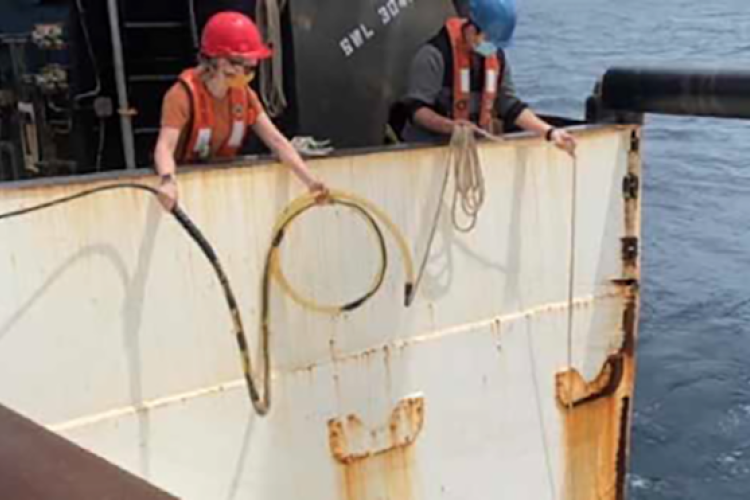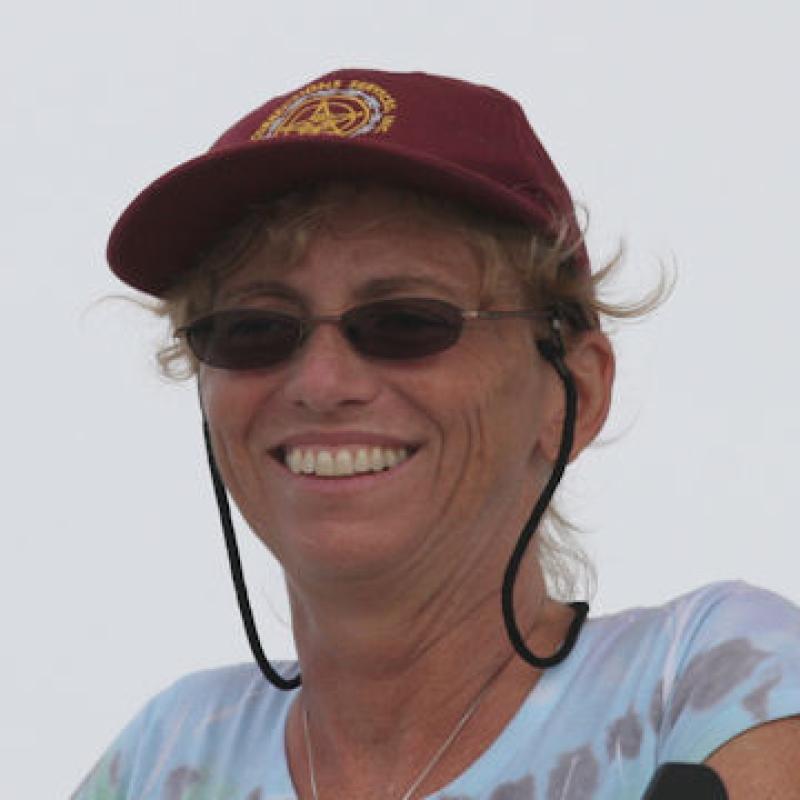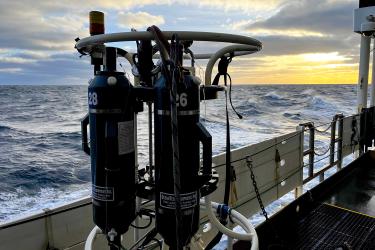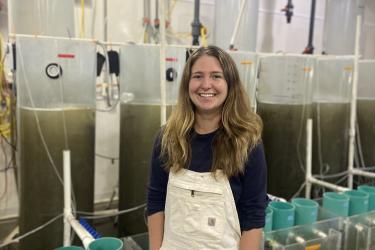After a week of sheltering-in-place, we left Newport, Rhode Island on Leg 2 of the Atlantic Marine Assessment Program for Protected Species (AMAPPS) abundance survey on July 27. Due to problems with one of the ship’s compasses, we were at anchor off Newport for a couple of days waiting for a new unit. After it was delivered by a small boat, the competent crew of the NOAA Ship Henry B. Bigelow successfully installed the new unit (Thank you!).
We began searching during the day for marine mammals, sea turtles, and seabirds on the shelf slope between the 100- and 2,000-meter depth contour. We used high-powered binoculars (the “Big Eyes”), the unaided eye, and passive acoustic monitoring. Between July 30 and Aug 3, we surveyed 377 nautical miles of trackline.
The “Big Eye” team detected more than 220 groups of whales and dolphins that consisted of about 1,500 individuals. The shelf-break slope waters east of Cape Cod have many more whales, dolphins, and sea birds than the waters west of Cape Cod. In fact, on August 3, in waters right around the Hague Line around Georges and Corsair Canyons, we saw about 110 groups of some 1,000 animals in 111 nautical miles. That’s an average of nine animals per nautical mile. In comparison, on Leg 1 from June 16 to July 11, we saw about 350 groups of some 3,500 animals in 1,260 nautical miles. That’s an average of just 2.7 animals per nautical mile.
Passive Acoustic Team
The acousticians had several long days of continuous acoustic recordings. The array deployments and retrievals were smooth. The crew on the Henry Bigelow helped us keep our array in the water as much as possible to maximize our recording effort. We had several single-species encounters—mostly for Risso's dolphin, bottlenose dolphin, and common dolphin. This gave us excellent recordings to use back in the lab to better understand each species' vocalizations. We are also delighted that we identified the unique characteristics of beaked whale vocalizations in real time.
Seabird Team
It was an exceptional week for the seabird team. We found 12 species on August 1—the highest daily diversity for AMAPPS 2021. We also had a single day count of 33 white-faced storm-petrels on August 3, a new continental high record. This species nests on islands in the Eastern Atlantic and migrates westward during the summer months. A Barolo shearwater, another rare visitor from the Eastern Atlantic, rattled our senses when it appeared on August 1. Much of what is known about its occurrence in the Northwest Atlantic is derived from data collected on AMAPPS cruises and on our science center’s Ecosystem Monitoring surveys.
Oceanography Team
Our nightwatch conducted a conductivity, temperature, and depth transect across Oceanographer Canyon. They enjoyed an evening of frequent lightning and down-pouring rain that was so heavy that 4–5 inches of water accumulated on the hydro deck.
On the nightwatch during August 3-4, the team completed a second watch of video plankton recorder sampling with a tow across Corsair Canyon. The recorder captured this image, a chain of Thalia democratica, which is a small salp.
Large numbers of this species were captured in the plankton nets. The chains break apart into individual animals in the nets. The highlight of the evening of August 3 was a swarm of hundreds of 4 to 6 centimeter jellyfish surrounding the ship as the VPR was being deployed.
Debra Palka
Chief Scientist
Leg 2 AMAPPS Abundance Survey July 27 – Aug 23, 2021
Aboard the NOAA Ship Henry B. Bigelow







